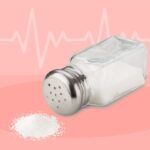How Protein Plays a Role
Lifting weights, however, can help you preserve muscle mass. It can act as a signal to retain and even gain muscle if paired with the right diet, according to the University of Maryland Medical System.
The key is to track your protein intake as well as the magnitude of your calorie deficit.
In your body, protein is broken down into amino acids, which are like building blocks. Your body reassembles those amino acids to build muscle and other tissues, helping you recover after a workout. But if you don’t eat enough, your body doesn’t have the building blocks needed to repair existing muscle and build new tissues.
The recommended daily allowance for protein is 0.8 grams (g) per kilogram (kg) of body weight — or 0.36 g per pound — to avoid a deficiency, according to the National Academies Press. When you’re in a caloric deficit, however, you may need more protein to prevent muscle loss. Athletes and people who lift weights may want to increase that to 1.4 to 2 g per kg or more, according to the Journal of the International Society of Sports Nutrition.
Taking in more protein during resistance training can build fat-free muscle mass, according to a research review in the Strength and Conditioning Journal. You may not necessarily lose weight, but you may lose weight from fat and gain it from muscle.
“Muscle is more dense than fat and takes up less volume, [so] you may look smaller and leaner, but your weight maybe stays the same,” says Carolina Araujo, a New York–based strength coach.
You can even gain some muscle while in a caloric deficit, especially if you’re new to exercise.
If you’re interested in losing weight without losing muscle mass, keep an eye on your calorie deficit. According to a meta-analysis in the Scandinavian Journal of Medicine and Science in Sports, keeping your calorie deficit at less than 500 calories per day may help ensure that your body has enough fuel without turning to proteins.
Read the full article here




